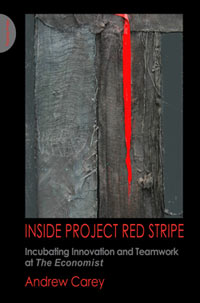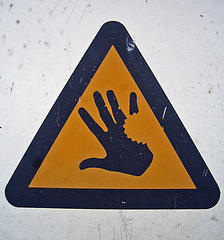|
Imprint: Triarchy Press
Published: 2008 List Price: £20.00 Offer Price: £16.00 Format: Paperback Extent: 232pp. Size: 15 x 23 cm ISBN: 978-0-9550081-6-0 Tags: Innovation, Teamwork, Design Thinking, The Economist Inside Project Red Stripe: Incubating Innovation and Teamwork at The Economist Andrew Carey Book Page About the author Contents Buy the book
Paperback:
|
Drifting, Angst and Pan-ic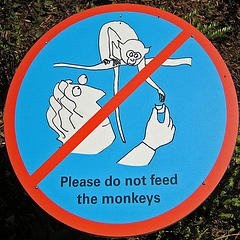
Joanna: 'I feel a little bit paralysed at the moment.'
One of the many tensions (and I mean tension in a Newton's 3rd Law kind of way) apparent in Project Red Stripe related to direction-finding, goals, intentions and wandering around. With its very broad remit, Project Red Stripe gave its members enormous scope for 'wandering about' and looking for, or waiting for, inspiration. Now, of course, this is in the very nature of an innovation team and one of the primary characteristics that distinguishes it from a more goal-oriented project team. Yet, this innovation team had a very clear sense of having a goal: 'creating an innovative and web-based product, service or business model'. It just didn't yet know what the goal looked like. Its task was to locate the goal and then get there. This set up tensions from the outset. There was a feeling amongst the team at different times that they were wasting time. Against this was the clear sense that the team ought to take its time in identifying the right idea - because there was surely no point in spending six months writing business and marketing plans, developing websites and other infrastructure, working with partners and commercialising the idea, if they hadn't chosen the right one in the first place. Drifting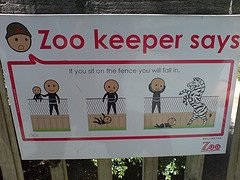
This often reminded me of 'drifting'. Drifting has been developed as a performance art, as autobiogeography, as a philosophical study and as a literary style (as well as a way of exploring the urban landscape). Its masters and mistresses (if you can master and mistress something as elusive as drifting) are the Wrights and Sites team.
It seems to me that drifting has particular relevance to the innovation project team where it pays attention to the idea of determination. Baz Kershaw, formerly Professor of Drama at Bristol University, although he's not a drifter as far as I know, has talked about the way in which our experience at a zoo is 'over-determined': signs, paths, maps and guides structure the route we walk; information notices structure the way we look at and experience the creatures; cages, enclosures and access points structure the way we observe and what we observe - and all this in addition to the particular memories and experiences we may bring, the cultural associations and responses that we may carry with us, and so on. Cities have a similar effect: there are explicit and implicit rules about where we can go and where we can't; where we can stop, stand and sit and where we must walk; what we can look at and what we can't; even how fast we should walk or on what side of the pavement. All of this 'over-determination' in the city or in the zoo makes it hard to 'just drift'. Some of these same rules come into play in an innovation project. The team members have their own expectations and associations, have their own experience of groups, reactions to rules and authority, working preferences and so on. They will also tend, such being our habit in this country and at this time, to look for some rules and guidelines, to establish where the power and the authority lies, to set down - if there aren't any already in place - codes of conduct, attendance times and working policies.
Inevitably, this sought-after regimentation can be at odds with the 'right to roam', which is the passport of the innovative and inventive mind. Just as drifting largely dispenses with maps and destinations and attempts to journey without intention (what Walter Benjamin - quoted here - has called 'the rhythmics of... slumber'), so we can suppose that innovation might attempt to dispense with as many limiting conventions as possible, in order to facilitate the emergence of ideas. Though creating a regime within which regimentation is discouraged is itself paradoxical. Panic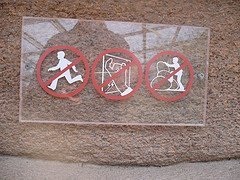
One of the by-products of drifting or, more specifically, of the absence of rules, form and shape that accompany it, is a sense of panic. There is a hegemony of rules and shapes and laws precisely because we feel chillingly uncomfortable without them. Phil Smith has described this kind of panic as an 'encounter with everything (else), an intense, but relatively common initiatory Pan-ic - an experience of causeless, but sited dread' - the hyphenation of pan-ic reminds us of the word's Greek origins and associations with the god Pan and the word pan meaning everything.
In this form, panic is closely related to Kierkegaard's existential angst or dread. This dread is explicitly connected with freedom and choices, with the uncertainties and unboundariedness that freedom entails: 'the dread felt by innocence, which is the reflex of freedom within itself at the thought of its possibility.' That may sound ridiculously grand. I'm sure none of the members of the team felt they were experiencing existential angst. But there was a sense of panic at times, when the team realised that they could do anything, but that they only had six months to do it. And I also connect that panic with their need to find the 'big idea', the becoming-whale-of-an-idea.
So, the Red Stripe team sometimes wandered around without a clear sense of what was going to happen next and without clear rules about how it might be going to happen or what they should be doing about it. Jurgen Habermas talks about something like this when he discusses 'action oriented to success' and 'action oriented to understanding' and the different modes of thinking and communication that they require (logical and pragmatic for the first; rhizomatic and affective for the second). Movement artist Sandra Reeve says much the same when discussing action preceding intention: In Move into Life practice, I often start from movement tasks or moving with no fixed intention in a natural environment and allow associations, feelings, images and ultimately meaning to emerge from a constantly shifting context. Sometimes I introduce a theme, in order to guide the direction of my creative response... This corresponds with Gibson's theory of affordances: that is, how we pick up information appropriate to our needs directly from the environment. In any case, the team was 'drifting'. Instinctively, that seems like an appropriate thing for an innovation team to do; but it's also an uncomfortable thing to do at any time, and especially in a business context.
For myself, I would choose this state of drifting as the most profoundly productive one. Others would say that safety is a prerequisite of productive enquiry or creativity. Arie de Geus maintains that 'fear inhibits learning'. Probably all these views are correct. Certainly there are many, including some members of the Red Stripe team, who work hardest and fastest when they know where they're going. Perhaps it depends on the make-up of your team, or perhaps your team can be invited to approach panic and safety in a new light. In any case, we could say that the issue of drifting and panic and over-determination needs to be addressed explicitly, at least if safety is intended. One possible approach would be to invite team members to compare their situation to that of the participants in Erotourism where two lovers travel independently to a chosen city without mobile phones or any pre-arrangements and set about finding each other. There is a destination, but no map. [Incidentally, I like these words of Borges: 'la inminencia de una revelación, que no se produce' (the imminence of a revelation that does not take place). They seem to me to characterise much of the early part of Project Red Stripe's existence and, perhaps, that of many other such innovation projects]. Weaving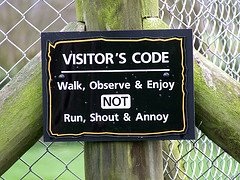
Just before we leave the question of wandering around:
Tim Ingold, writing about String Bags and Birds' Nests, suggests that we might look at construction as a kind of weaving, rather than as a kind of making: Whereas making defines an activity in terms of its capacity to yield a finished object, weaving focuses on the skilled character of the process by which that object comes into existence. Three important properties of technical skill are highlighted. First, skill is not a property of the individual human body in isolation but of the whole system of relations constituted by the presence of the artisan in a richly structured environment. Secondly, rather than representing the mere mechanical application of external force, skill involves qualities of care, judgement and dexterity. Thirdly, skilled action has a narrative quality, in the sense that every movement grows rhythmically out of the one before and lays the groundwork for the next.Perhaps innovation, as well as construction, can be looked at as a kind of weaving. Dilemmas:
----------------------------------------------------------------------------- Credits: Zoo signs: Paul Downey, Bell and Jef, Edinburgh Blog, Tup Wanders, Paul Downey, Kate Sheets, Tim Parkinson |

